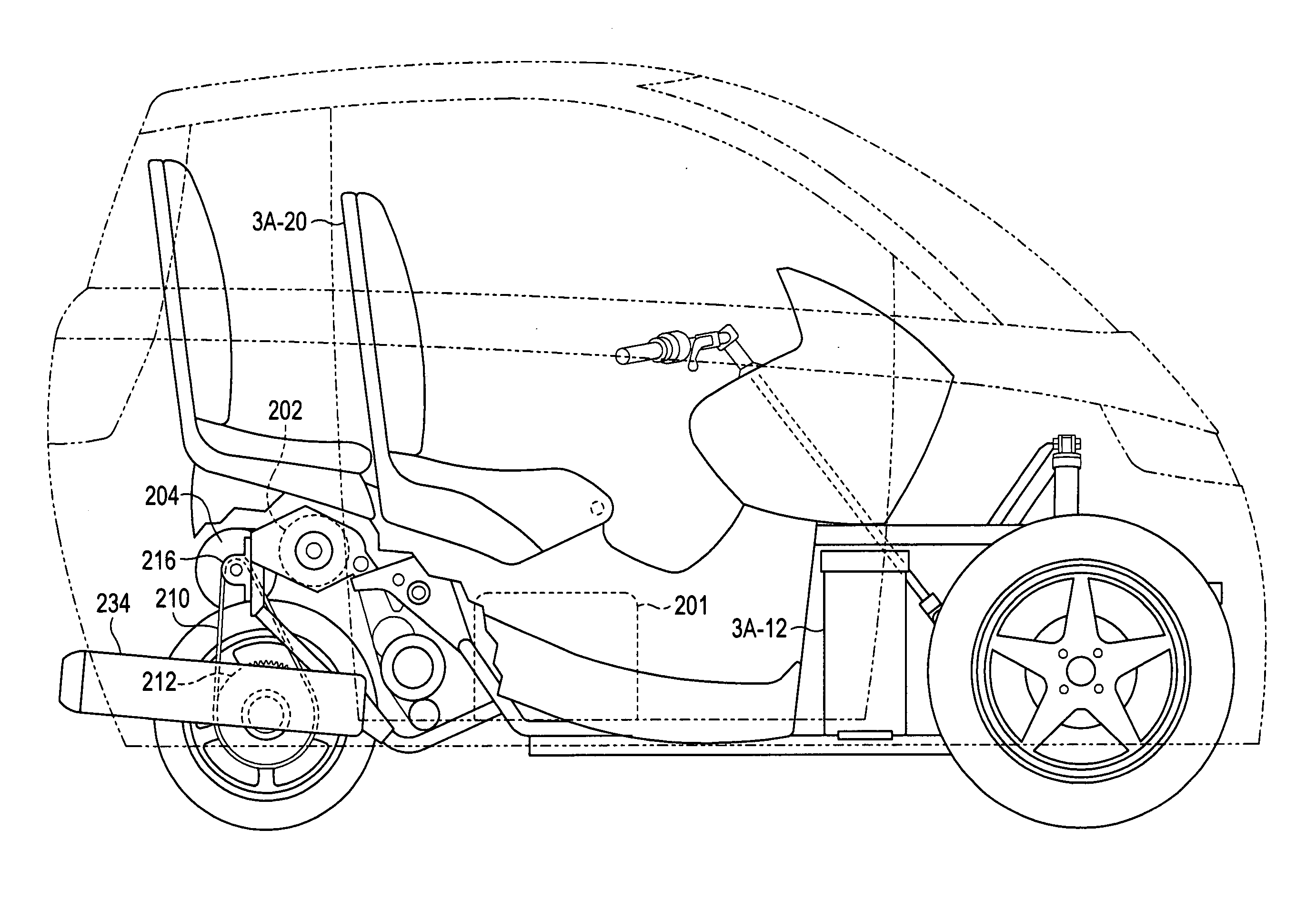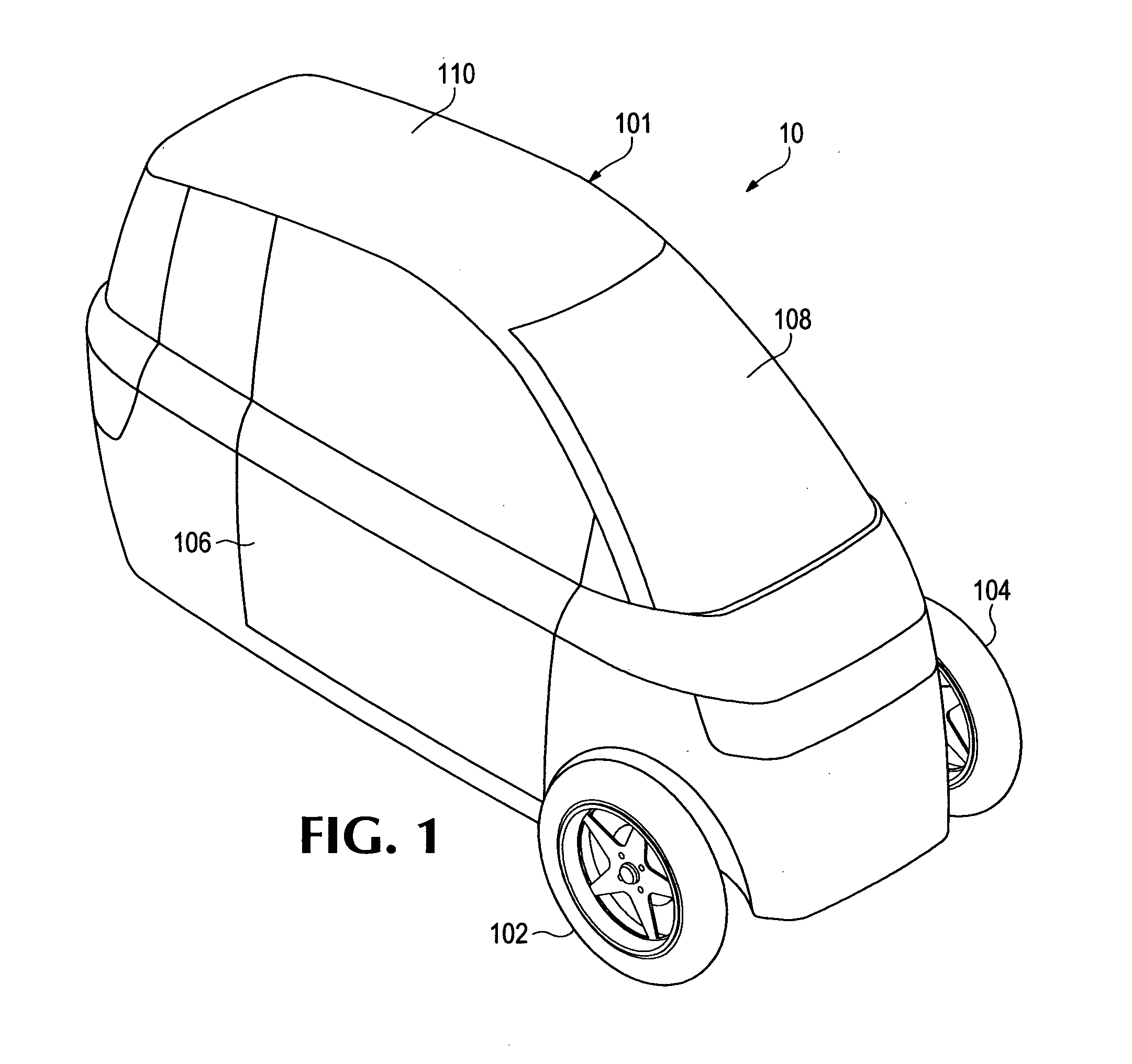Free-to-lean three-wheeled passenger vehicle, power plant controller and body therefor
a free-to-lean, passenger vehicle technology, applied in hybrid vehicles, process and machine control, instruments, etc., can solve problems such as energy consumption, passengers' queasy feeling, and reducing efficiency
- Summary
- Abstract
- Description
- Claims
- Application Information
AI Technical Summary
Benefits of technology
Problems solved by technology
Method used
Image
Examples
Embodiment Construction
[0027]FIG. 1 illustrates in isometric view a three-wheeled passenger vehicle 10 in a vertical orientation. The drive (and, in accordance with one embodiment of the invention, rear) wheel is obscured by the body of the vehicle. Two coast or idle (and, in accordance with one embodiment of the invention, front) wheels are also visible in FIG. 1. The technologies outlined here enable a vehicle with a group of benefits that were previously not possible. In short, the invention enables a new category of vehicle.
[0028]Most metropolitan drivers use over-sized vehicles that are capable of carrying 5 or more passengers even when they are driving alone. (In the U.S., 77% of workers commute alone in their cars.) These vehicles weigh an average of 4,000 pounds, with many weighing 8,000 pounds, and often achieve fuel efficiencies of less than twenty-five miles-per-gallon (MPG). They take up large swaths of road space (with traffic getting worse in forty-eight of the top fifty U.S. cities in a rec...
PUM
 Login to View More
Login to View More Abstract
Description
Claims
Application Information
 Login to View More
Login to View More - R&D
- Intellectual Property
- Life Sciences
- Materials
- Tech Scout
- Unparalleled Data Quality
- Higher Quality Content
- 60% Fewer Hallucinations
Browse by: Latest US Patents, China's latest patents, Technical Efficacy Thesaurus, Application Domain, Technology Topic, Popular Technical Reports.
© 2025 PatSnap. All rights reserved.Legal|Privacy policy|Modern Slavery Act Transparency Statement|Sitemap|About US| Contact US: help@patsnap.com



